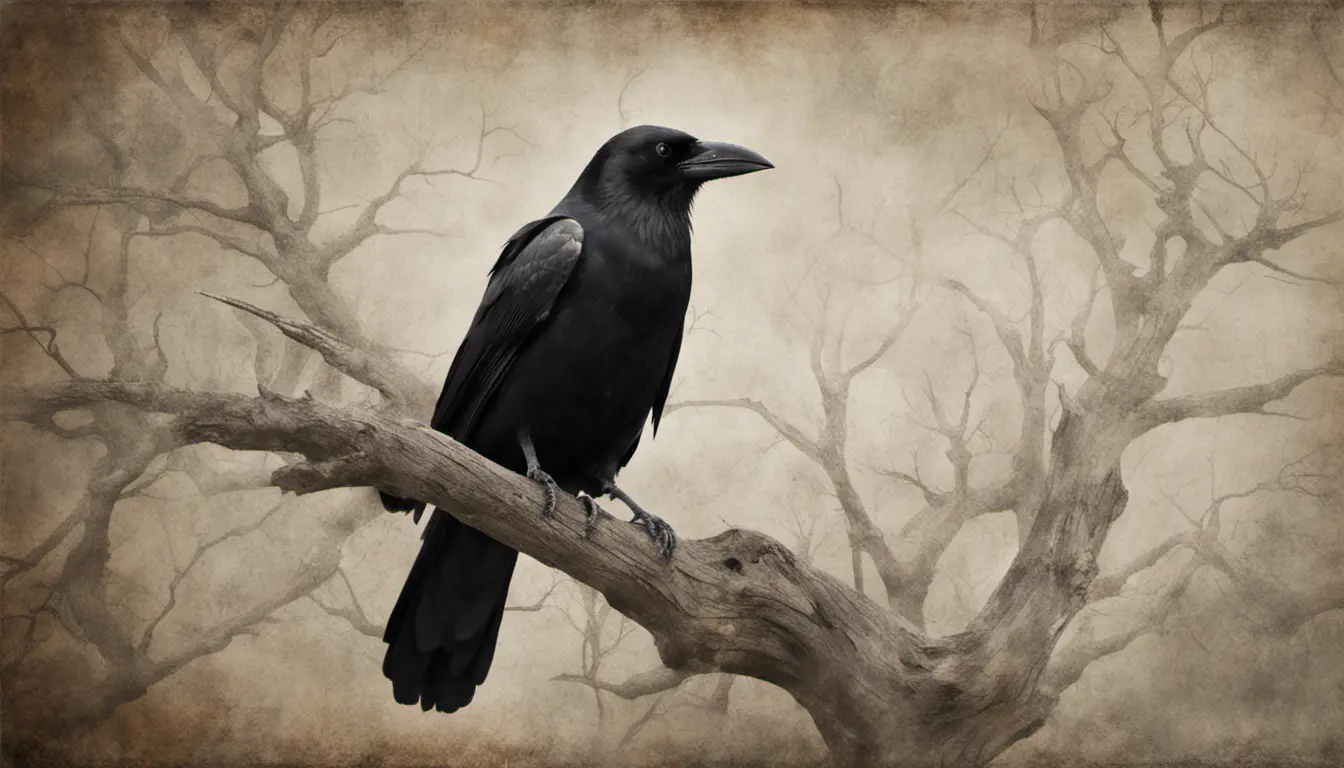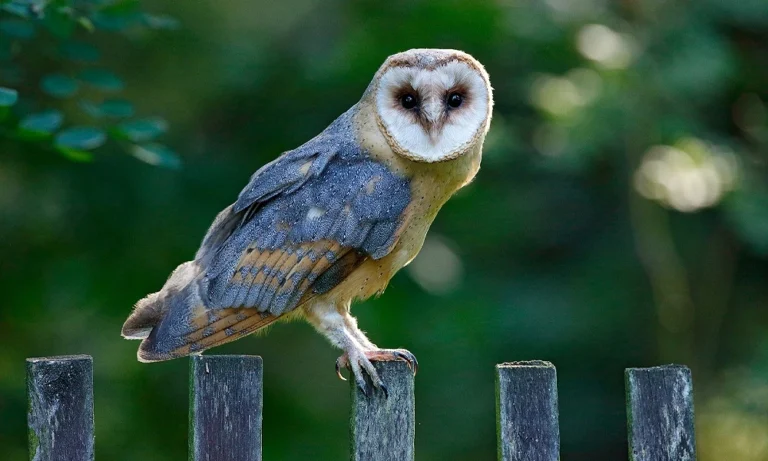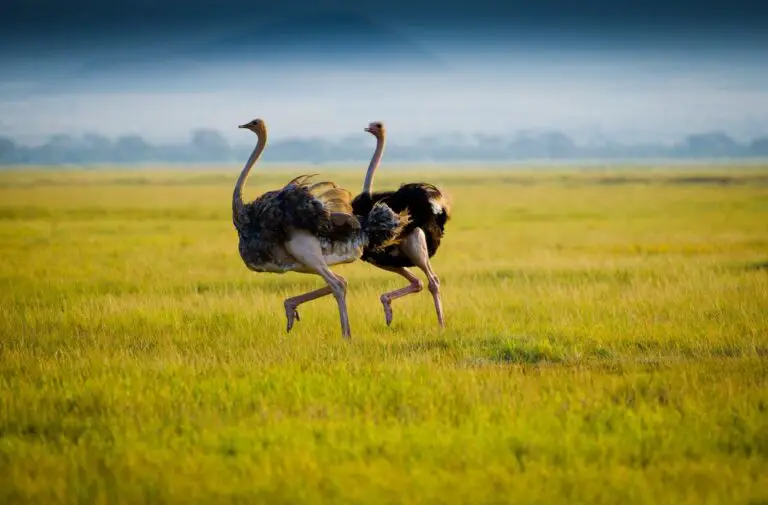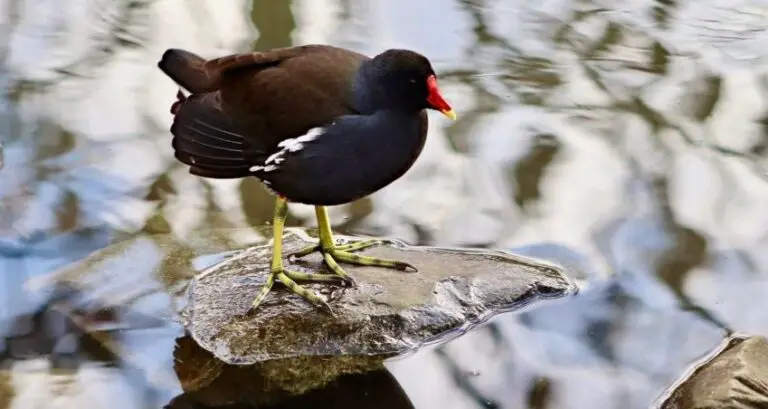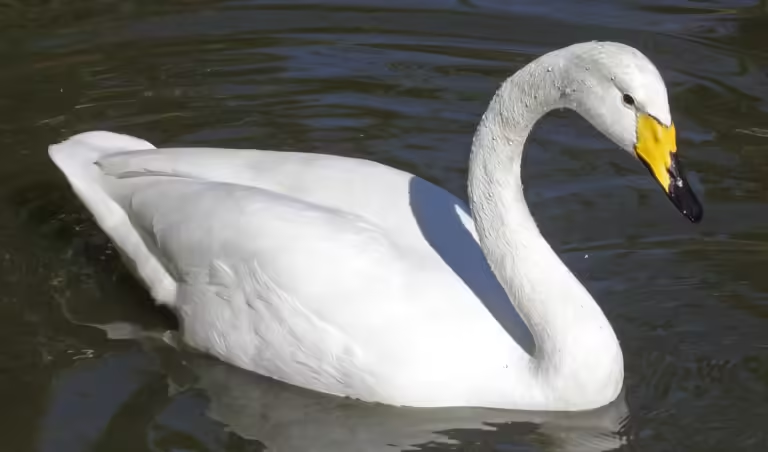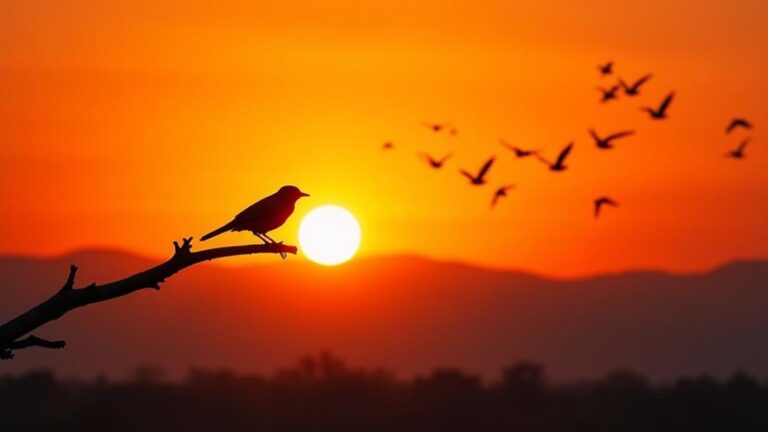Have you ever wondered how long do crows live? Discover the lifespan of crows, from their average years to the remarkable longevity of these intelligent birds. Let’s take a closer look at the lives of these remarkable birds.
Imagine a scenario where you stumble upon a group of crows in your backyard, their shiny black feathers glistening in the sunlight as they communicate with each other in their unique language. Fascinating, isn’t it?
Crows are known for their exceptional problem-solving abilities and their remarkable memory, making them one of the most intelligent species in the avian world.
In this article, we will delve into various aspects of their lives, including their lifespan, reproductive behaviors, feeding habits, and social dynamics.
We will also explore the threats they face in the wild and the conservation efforts being made to protect them. Additionally, we will discuss the cultural significance of crows and the ongoing research and scientific studies that shed light on their intriguing existence.
So, let’s embark on this journey to gain a glimpse into the captivating world of these intelligent birds and learn how we can coexist harmoniously with them.
Key Takeaways
- Crows are highly intelligent and have impressive problem-solving abilities.
- Factors such as predation, habitat loss, and disease can affect the lifespan of crows.
- Crows form lifelong pair bonds and build nests together, and both parents take turns incubating the eggs and caring for the chicks.
- Crows have a diverse diet and are adaptable to different habitats, but urban environments with pollution and limited food options can shorten their lifespan.
The Intelligence of Crows
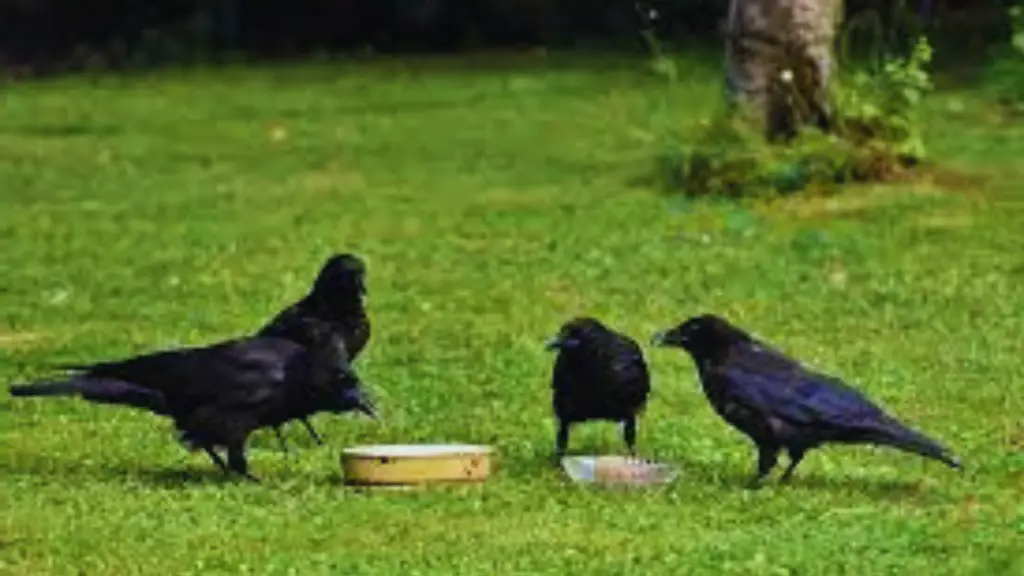
Crows, with their sharp minds and quick wits, are always one step ahead, outsmarting and outmaneuvering their surroundings. These intelligent birds have captivated researchers and bird enthusiasts alike with their remarkable problem-solving abilities and adaptability. When it comes to intelligence, crows are at the top of the avian hierarchy.
One of the most fascinating aspects of crow intelligence is their ability to use tools. They have been observed fashioning tools out of twigs and leaves to extract food from hard-to-reach places. This innovative behavior showcases their problem-solving skills and highlights their ability to think outside the box.
Crows are also known for their impressive memory. They can remember human faces and hold grudges against those who have wronged them. This long-term memory allows them to recognize and avoid potential threats, making them incredibly adaptable and resourceful.
Furthermore, crows possess a unique social intelligence. They engage in complex communication with one another, using a variety of vocalizations and body movements. They can convey specific messages and even warn each other of potential dangers.
In conclusion, crows are truly extraordinary creatures when it comes to intelligence. Their ability to use tools, remember faces, and communicate effectively sets them apart from other birds. So, next time you see a crow perched on a tree, take a moment to appreciate the brilliance and cunning of these remarkable birds.
Lifespan of Crows
In the wild, crows typically have an average lifespan of about 7 to 8 years. Predation, habitat loss, and disease are just a few factors that can affect their lifespan. However, under optimal conditions, crows have the potential for longevity. The longest recorded lifespan for a crow is 29 years, highlighting their ability to live longer.
Average lifespan in the wild
Unbelievably, these clever creatures can live up to 20 years in the wild! Crows are known for their intelligence and adaptability, which may contribute to their relatively long lifespan. In the wild, they face various challenges, such as predation, disease, and competition for resources.
However, crows have developed remarkable survival skills that allow them to thrive in different environments. They are highly social birds, living in flocks that provide protection and support. Additionally, their ability to scavenge and find food in diverse habitats gives them an advantage in terms of survival.
It’s fascinating to think that these intelligent birds can navigate the complexities of their natural environment and live for two decades. Their long lifespan is a testament to their remarkable adaptability and resilience in the wild.
Factors affecting lifespan
Factors such as habitat conditions, predator presence, and access to food sources greatly impact the lifespan of crows. Crows living in urban areas have shorter lifespans due to exposure to pollution, traffic, and limited food options. Crows residing in rural or forested regions have a higher chance of survival as they have access to a wider variety of food sources and face fewer dangers from predators. The availability of suitable nesting sites is crucial for the longevity of crows. With proper shelter, they can successfully raise their young and ensure the continuation of their species. Overall, the ability of crows to adapt to their environment and secure resources plays a significant role in determining their lifespan.
Longest recorded lifespan
Surprisingly, the crow’s ability to adapt to various environments has allowed some individuals to reach an astonishingly old age. The longest recorded lifespan of a crow was 29 years and 5 months, which is quite remarkable for a wild bird. So, how did these crows manage to defy the odds and live for such a long time? Here are four factors that contributed to their longevity:
- Diet: Crows are known to have a diverse diet, consuming a wide range of foods such as fruits, insects, small mammals, and even carrion. This varied diet ensures that they receive all the necessary nutrients for a healthy and long life.
- Social bonds: Crows are highly social birds that form strong bonds with their family members and flock mates. This social support network helps them navigate challenges and provides protection against predators.
- Cognitive abilities: Crows are incredibly intelligent birds, capable of problem-solving and using tools. Their cognitive abilities enable them to make better decisions, avoid dangerous situations, and ultimately increase their chances of survival.
- Adaptability: Crows have successfully adapted to urban environments, where they thrive on the abundant food sources and nesting opportunities. This adaptability has allowed them to avoid many of the threats that wild birds face, leading to a longer lifespan.
In conclusion, the crow’s ability to adapt, their diverse diet, strong social bonds, and cognitive abilities all contribute to their impressive lifespan. These factors have enabled some crows to live for nearly three decades, proving that intelligence and adaptability are key to a long and successful life for these remarkable birds.
Reproduction and Parenting
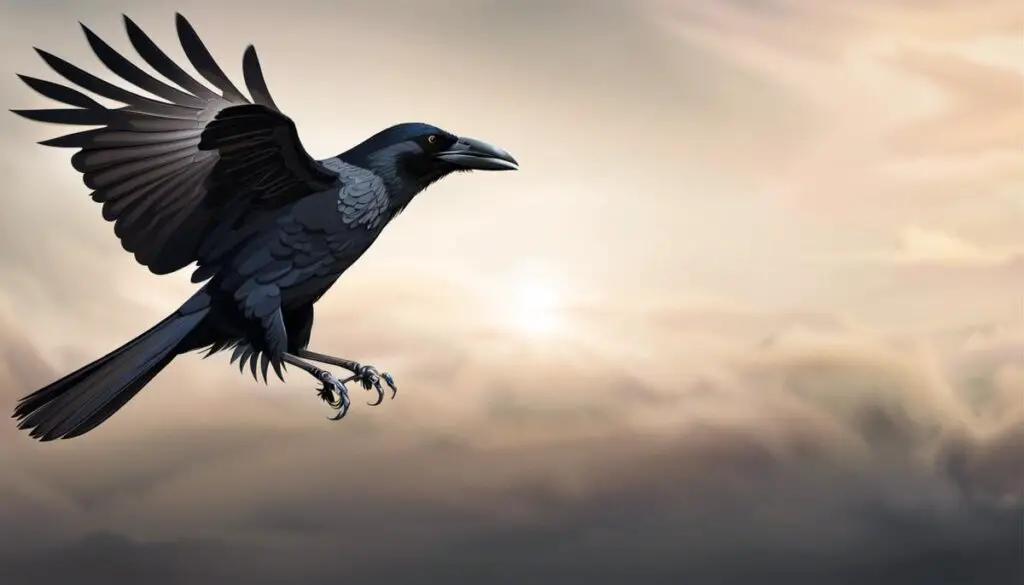
To understand crows’ reproductive habits, imagine yourself observing their intricate parenting rituals. Crows are highly social birds that form lifelong pair bonds. They usually mate for life and raise their young together, displaying remarkable commitment and cooperation.
The breeding season for crows typically begins in early spring. During this time, you would witness elaborate courtship displays, with the male crow showing off his intelligence and agility to attract a mate. Once a pair is formed, they will build a nest together, usually high up in a tree.
The female crow lays a clutch of 3 to 6 eggs, which she diligently incubates for about 18 days. Both parents take turns sitting on the eggs, sharing the responsibility of keeping them warm and protected. After the eggs hatch, the parents tirelessly feed and care for their chicks.
To give you a glimpse of the level of dedication and cooperation exhibited by crow parents, here is a table showcasing their parenting roles:
| Parenting Role | Male Crow | Female Crow |
|---|---|---|
| Nest Building | Builds the nest structure | Gathers nesting material |
| Incubation | Takes turns with female | Takes turns with male |
| Feeding | Hunts for food | Feeds the chicks |
Observing these intelligent birds in their reproductive journey highlights the strong sense of family and teamwork that crows possess.
Feeding Habits
When it comes to feeding habits, crows have a diverse and omnivorous diet. This means they eat both plants and animals. They are known to be opportunistic feeders, taking advantage of a wide range of food sources.
Crows are famous for their food caching and memory abilities. They can remember where they have hidden their food for extended periods of time. This shows their remarkable intelligence and adaptability.
Lastly, crows exhibit scavenging behaviors. They are often seen foraging for food in urban areas and taking advantage of human leftovers. This ability to find and utilize resources in different environments further demonstrates their resourcefulness.
Omnivorous diet
Crows, with their omnivorous diet, can munch on anything from berries to French fries. These intelligent birds have a wide range of food preferences and are not picky eaters. They have a natural instinct to scavenge for food, and their sharp beaks and strong digestive systems allow them to consume a variety of items.
Crows are known to eat insects, small mammals, eggs, fruits, seeds, and even garbage. Their ability to adapt to different environments and food sources is one of the reasons why they have been able to thrive in various habitats around the world.
So next time you see a crow, remember that it can enjoy a meal from the local fast-food joint just as much as its natural diet of fruits and insects.
Food caching and memory
Now let’s delve into another fascinating aspect of crow behavior: food caching and memory.
Did you know that crows have a remarkable ability to remember where they hide their food? These clever creatures strategically hide their surplus food in various locations, creating a cache that they can rely on during times of scarcity.
Their memory is so exceptional that they can remember hundreds of hiding spots, even months after storage. This skill not only demonstrates their intelligence but also their survival instincts.
By spreading out their resources, crows ensure a steady food supply, even when faced with unpredictable circumstances.
So next time you spot a crow cleverly stashing away its food, remember the incredible memory and adaptability that lies behind this seemingly simple act.
Scavenging behaviors
Take a moment to appreciate the ingenuity with which crows scavenge for food. Utilizing their resourcefulness and adaptability, these intelligent birds have developed remarkable scavenging behaviors that allow them to thrive in various situations. Here are three fascinating ways crows scavenge for food:
- Tool use: Crows have been observed using tools to access hard-to-reach food sources. They can fashion tools from twigs and use them to extract insects from crevices or to hook and pull up food items from deep within tree bark.
- Cooperative scavenging: Crows often work together in groups to scavenge for food. By cooperating, they can overcome larger obstacles, such as opening a tightly sealed trash can lid, and share the spoils amongst the group.
- Problem-solving: Crows possess remarkable problem-solving skills, allowing them to overcome complex scavenging challenges. They can quickly learn and remember which areas are more likely to yield food, such as specific garbage cans or certain parts of a park.
By employing these strategies, crows demonstrate their remarkable adaptability and intelligence, ensuring their survival in a wide range of environments.
Social Dynamics
In the world of crows, social dynamics play a crucial role in their daily lives. Fascinatingly, these dynamics revolve around an intricate hierarchy and dominance within their groups. Individuals establish their rank and maintain it through various displays of power.
Moreover, crows exhibit cooperative behaviors that highlight their remarkable intelligence and teamwork. They work together to accomplish tasks and solve problems, showcasing their ability to collaborate effectively.
Lastly, communal roosting is a common practice among crows. They gather in large numbers to sleep and socialize, creating a mesmerizing sight as they huddle together in the trees. This behavior further emphasizes the strong social bonds that exist within crow communities.
Hierarchy and dominance
Explore the complex dynamics of hierarchy and dominance among crows, as you delve into the lives of these remarkably intelligent birds.
In a crow society, dominance is established through aggressive displays and physical confrontations. Alpha birds, typically larger and older, hold the highest rank and have priority access to food and mates. They also have the power to enforce their dominance over lower-ranking crows.
Subordinate crows, on the other hand, must submit to the authority of higher-ranking individuals and often display submissive behaviors such as crouching or vocalizing in a lower tone. This strict hierarchy ensures order within the Crow community and helps maintain social cohesion.
However, challenges to the established order can arise, with younger crows attempting to challenge the dominance of the older alphas. These power struggles can be intense and can result in changes to the hierarchy.
Fascinatingly, crows remember and recognize individual dominance relationships, even across different years, which further illustrates the complexity of their social dynamics.
Cooperative behaviors
Cooperative behaviors in crow societies are essential for their survival and social cohesion. These intelligent birds exhibit remarkable teamwork and collaboration, which contribute to their overall success. Here are five intriguing cooperative behaviors that crows engage in:
- Cooperative breeding: Crows often form family groups where multiple members help raise the young, ensuring their survival and development.
- Mobbing: Crows work together to confront and drive away potential threats, such as predators or intruders, safeguarding their territory.
- Tool-sharing: They demonstrate a remarkable ability to share tools and knowledge, employing cooperative problem-solving techniques to obtain food.
- Food sharing: Crows exhibit altruistic behavior by sharing food with other members of their group, strengthening social bonds.
- Nest-building assistance: When constructing their nests, crows assist each other by collecting and transporting materials, demonstrating collective effort.
Through these cooperative behaviors, crows display their intelligence, adaptability, and social nature, highlighting the intricate dynamics within their societies.
Communal roosting
Crow societies are a bustling hub of activity, with communal roosting acting as a nightly symphony of feathers and caws. Each evening, crows from different territories gather together in large numbers to roost for the night.
This behavior not only provides them with safety in numbers but also allows for social interactions and the exchange of valuable information. As the sun sets, the crows arrive at their chosen roosting site, creating a cacophony of calls that fills the air. They jostle for the best perch, establishing hierarchies and strengthening social bonds.
Throughout the night, they huddle together, sharing warmth and protection. This communal roosting behavior showcases the strong sense of community and cooperation among crows, highlighting their intelligence and adaptability as social beings.
Vocalization and Communication
Crows are known for their diverse vocalizations, which are key to their highly intricate communication system. These intelligent birds have a wide range of calls, each serving a specific purpose.
For instance, their loud, cawing call is often used to alert other crows of potential dangers or to rally the flock. It can also be a way for crows to establish and defend their territory. However, crows are not limited to just one call. They have a repertoire of over 20 different vocalizations, each with its own meaning.
Some calls are used to communicate with their mates or offspring, while others are used for social bonding within the group. Crows can even mimic the calls of other animals and humans, showcasing their incredible ability to learn and adapt.
Their vocalizations are not only used for communication but also for problem-solving. By listening to the calls of other crows, they can learn about the presence of food or potential threats in the environment.
Overall, crows’ vocalizations play a crucial role in their complex social interactions and survival strategies.
Habitat and Range
Nestled among the towering trees, you can often find these clever creatures, their black feathers shimmering in the dappled sunlight. Crows are highly adaptable birds and can be found in a variety of habitats across the world. They are known to inhabit forests, woodlands, parks, and even urban areas.
Here are some key points about the habitat and range of crows:
Forests and Woodlands:
Crows are commonly found in deciduous forests and coniferous woodlands.
- They prefer areas with a mix of open spaces and dense vegetation.
- These habitats provide crows with ample food sources like insects, fruits, and small animals.
- Parks and Urban Areas:
- Crows have adapted well to urban environments, making parks and cities their homes.
- They are attracted to areas with abundant food resources, such as trash bins and leftovers.
- Tall buildings and trees serve as convenient roosting and nesting sites for crows.
Range:
- Crows have a vast range, spanning across North America, Europe, Asia, and parts of Africa.
- Some species of crows are endemic to specific regions, while others have a more widespread distribution.
- Their ability to thrive in various habitats contributes to their wide geographic range.
In conclusion, crows are versatile birds that can thrive in a range of habitats, from forests and woodlands to parks and urban areas. Their adaptability and intelligence have allowed them to successfully colonize diverse environments around the world.
Threats and Conservation
As you wander through their realm, you’ll come to understand the delicate balance between their existence and the ever-present threats they face. Crows, despite their intelligence and adaptability, are not exempt from the dangers that surround them.
One of the primary threats they encounter is habitat loss. As urbanization and deforestation continue to encroach upon their territory, crows are forced to find new places to call home. This disruption can result in the fragmentation of their populations and a decrease in available resources.
Another significant threat to crows is the use of pesticides. These chemicals, intended to control pests, can inadvertently harm crows and other wildlife. Pesticides can contaminate the food sources of crows, leading to toxicity and even death. Additionally, crows are susceptible to collisions with vehicles and structures, as they often scavenge on roadways and near buildings.
Conservation efforts are essential to safeguarding the future of these remarkable birds. Protecting and restoring their habitats, particularly in urban areas, is crucial. Implementing sustainable agricultural practices that reduce the use of pesticides can also help minimize their impact on crow populations. Additionally, raising awareness about the importance of crows and their role in ecosystems can foster a greater appreciation for these intelligent creatures.
By understanding the threats they face and taking action to mitigate them, we can ensure that crows continue to thrive and enchant us with their intelligence and adaptability for generations to come.
Cultural Significance
Embedded within our cultures, crows hold a profound significance that touches our hearts and minds. These intelligent birds have captivated human imagination for centuries, appearing in myths, folklore, and literature across different civilizations. Their dark feathers and mysterious behavior have made them a symbol of both wisdom and death, representing a balance between light and darkness.
To further understand the cultural significance of crows, let’s take a look at the table below:
| Culture | Symbolism | Meaning |
|---|---|---|
| Native American | Messenger between worlds | Crows were believed to carry messages between the earthly realm and the spirit world. |
| Celtic | Protection and prophecy | Crows were considered protectors and indicators of impending changes or events. |
| Japanese | Divine messengers | Crows were seen as messengers of the gods and were associated with good fortune. |
| Norse | Thought and memory | Crows were associated with the god Odin, who had two crows that represented thought and memory. |
| Hindu | Ancestor spirits | Crows were believed to be the spirits of ancestors, bringing guidance and protection. |
These examples only scratch the surface of the cultural significance that crows hold. Their presence in our myths and legends reflects our fascination with their intelligence and adaptability. As we continue to learn more about these remarkable birds, their influence on our cultures will undoubtedly grow.
Research and Scientific Studies
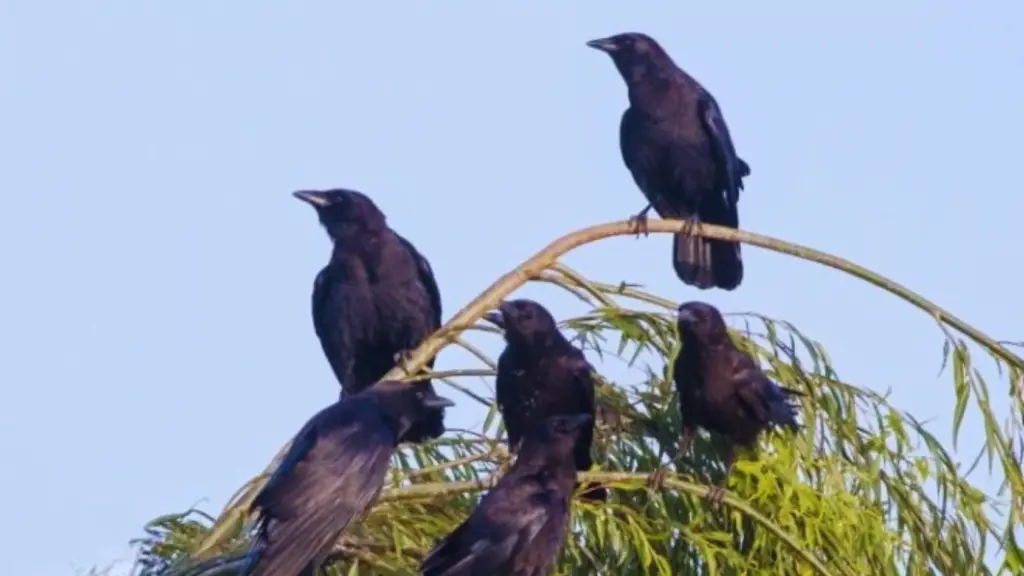
Conducting research and scientific studies has provided us with a deeper understanding of the capabilities and behaviors of these fascinating, highly intelligent creatures. Crows have been the subject of numerous studies, shedding light on their remarkable abilities and complex social dynamics.
One area of research has focused on crows’ problem-solving skills. These birds have demonstrated an impressive ability to use tools, such as sticks, to extract food from crevices. They have also been observed using cars to crack open nuts, showing their adaptability in utilizing their environment to their advantage.
Scientists have also discovered that crows possess a remarkable memory. They can remember faces and distinguish between individuals, even after long periods of time. This ability allows them to recognize humans who have previously posed a threat to them, highlighting their capacity for learning and adaptation.
Additionally, researchers have found that crows exhibit social intelligence. They engage in cooperative behaviors, such as mobbing predators to protect their nest or sharing information about food sources within their group. These findings suggest that crows have a sophisticated understanding of social dynamics and possess the ability to communicate and cooperate with other members of their species.
In conclusion, research and scientific studies have revealed the impressive cognitive abilities and social behaviors of crows. These studies have deepened our appreciation for these intelligent birds and continue to provide valuable insights into their complex lives.
Coexistence with Humans
Living in harmony with humans, crows have shown a remarkable ability to adapt to urban environments and interact with us in surprising ways. These intelligent birds have found a way to coexist with us, utilizing our presence to their advantage.
For instance, crows have been observed carefully observing human behavior and adapting their own actions accordingly. They have learned to recognize certain individuals, especially those who feed them regularly, and can even remember faces for several years. This ability to recognize and remember individual humans is truly remarkable.
Not only do crows adapt to our presence, but they also actively seek interaction with us. Some studies have shown that crows will engage in playful behavior with humans, such as sliding down snowy rooftops or flying close to people to get their attention. They have also been known to bring small gifts, like shiny objects or food, to those who have shown them kindness. These interactions demonstrate the social intelligence and curiosity of these birds.
However, it is important to note that while crows can coexist with humans, they are still wild animals and should be treated as such. Feeding crows is a common practice, but it should be done responsibly to avoid dependency and health issues. Additionally, it is crucial to respect their natural behavior and habitat, allowing them to thrive in their own unique way.
By understanding and appreciating the coexistence between crows and humans, we can continue to learn from and enjoy the presence of these fascinating birds.
How Long Do Crows Live?: FAQs
Do crows migrate?
Yes, crows do migrate. They fly to warmer regions during the winter to find food and escape the cold. Migration helps them survive and thrive in different environments throughout the year.
How do crows communicate with each other?
Crows communicate with each other using a complex language of sounds, gestures, and movements. They’re like a symphony orchestra, with each member playing their part to convey messages and share information with their fellow crows.
What are the main threats to crow populations?
The main threats to crow populations include habitat loss, poisoning from pesticides, and collisions with vehicles. Be cautious about using pesticides near crows and advocate for conservation efforts to protect their habitats.
Are crows considered pests by humans?
Yes, crows are considered pests by many humans. They can cause damage to crops, gardens, and property. Additionally, their loud calls and scavenging behavior can be annoying.
What are some interesting research findings about crow intelligence?
Some interesting research findings about crow intelligence include their ability to use tools, solve complex puzzles, and recognize human faces. They have also been observed engaging in playful behavior and showing signs of empathy.
Conclusion
So next time you spot a crow, remember the remarkable intelligence, long lifespan, and intricate social dynamics that these captivating creatures possess.
From their clever problem-solving skills to their caring parenting behaviors, crows truly are a unique and fascinating species.
Whether they’re feasting on carrion or forming tight-knit communities, these charismatic birds continue to captivate scientists and bird enthusiasts alike.
So, embrace the enchantment of these intelligent avians and appreciate their incredible adaptability. Crow companionship is sure to bring you joy and jocularity!

